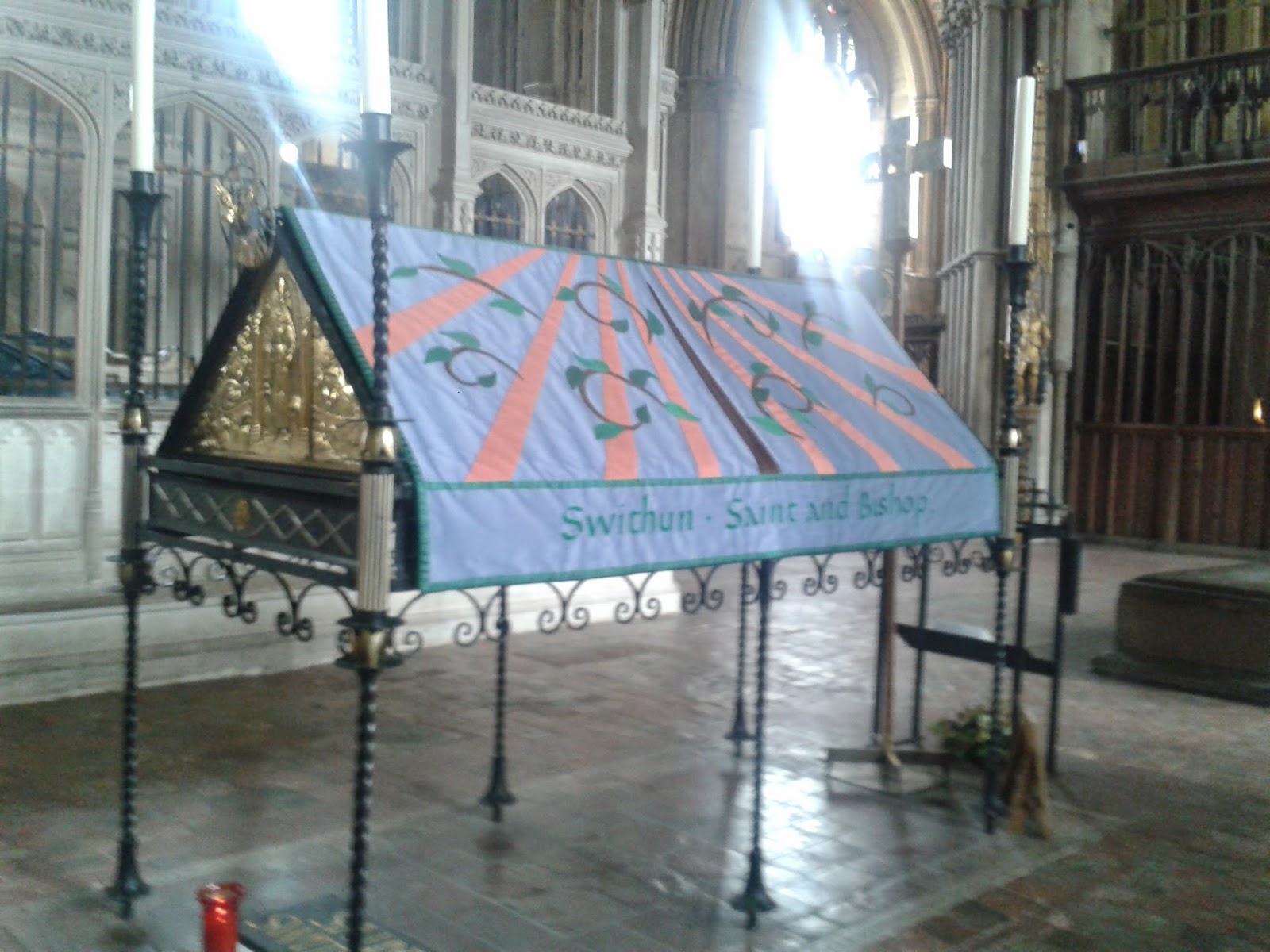We'll be starting off on the Pilgrims' Way from Winchester and will be following Saint Swithun's Way.
Saint Swithun was born around the year 800. After he was ordained he served in the royal household becoming an important advisor to the King. He became the 17th Bishop at Winchester Cathedral in 852 until he died in 862 after which he was associated with many miracles which saw him declared a Saint. This has led to his shrine in Winchester becoming a site for pilgrimage.
While he was Bishop he rebuilt Winchester’s East Gate bridge over the River Itchen and whilst he was visiting workmen for this legend says he found a poor woman who had dropped a basket of eggs which had broken – he mended the eggs and for this miracle he became famous. Tradition also has it that he took a young Alfred on pilgrimage to Rome.
Upon his death he was buried in a simple grave by the west door of the Saxon Cathedral (which is near to the north of the present Norman Cathedral).
When his body was moved on 15th July 971 to a site inside the Cathedral legend says that Saint Swithun generated a storm in protest and thus the day became Saint Swithun’s day and led to the poem:
St Swithun’s Day, if thou dost rain, For forty days it will remain: St Swithun’s Day, if thou be fair,For forty days ’twill rain nae mair.
His remains were transferred again to the new Norman Cathedral in 1093.
The Saint Swithun Way was opened in celebration of the Golden Jubilee of Queen Elizabeth II in 2002 and goes from Winchester to Farnham (and is roughly where the Pilgrims’ Way once ran – the original route is now under the A31). The way marking of this route is circles which are green and show a scallop shell with two crossing crosiers (to represent Saint Swithun and Saint Thomas a Becket).
Saint Swithun was born around the year 800. After he was ordained he served in the royal household becoming an important advisor to the King. He became the 17th Bishop at Winchester Cathedral in 852 until he died in 862 after which he was associated with many miracles which saw him declared a Saint. This has led to his shrine in Winchester becoming a site for pilgrimage.
While he was Bishop he rebuilt Winchester’s East Gate bridge over the River Itchen and whilst he was visiting workmen for this legend says he found a poor woman who had dropped a basket of eggs which had broken – he mended the eggs and for this miracle he became famous. Tradition also has it that he took a young Alfred on pilgrimage to Rome.
Upon his death he was buried in a simple grave by the west door of the Saxon Cathedral (which is near to the north of the present Norman Cathedral).
When his body was moved on 15th July 971 to a site inside the Cathedral legend says that Saint Swithun generated a storm in protest and thus the day became Saint Swithun’s day and led to the poem:
St Swithun’s Day, if thou dost rain, For forty days it will remain: St Swithun’s Day, if thou be fair,For forty days ’twill rain nae mair.
His remains were transferred again to the new Norman Cathedral in 1093.
The Saint Swithun Way was opened in celebration of the Golden Jubilee of Queen Elizabeth II in 2002 and goes from Winchester to Farnham (and is roughly where the Pilgrims’ Way once ran – the original route is now under the A31). The way marking of this route is circles which are green and show a scallop shell with two crossing crosiers (to represent Saint Swithun and Saint Thomas a Becket).



Comments
Post a Comment